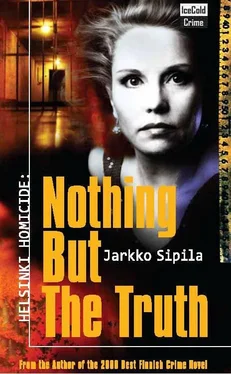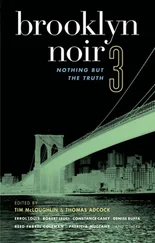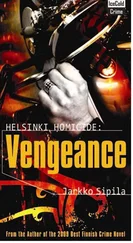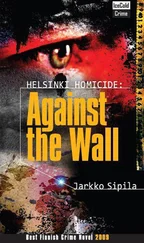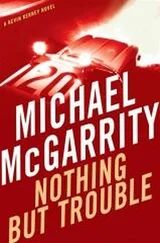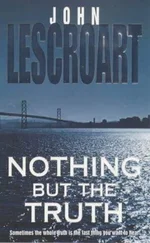Jarkko Sipila - Nothing but the Truth
Здесь есть возможность читать онлайн «Jarkko Sipila - Nothing but the Truth» весь текст электронной книги совершенно бесплатно (целиком полную версию без сокращений). В некоторых случаях можно слушать аудио, скачать через торрент в формате fb2 и присутствует краткое содержание. Жанр: Полицейский детектив, на английском языке. Описание произведения, (предисловие) а так же отзывы посетителей доступны на портале библиотеки ЛибКат.
- Название:Nothing but the Truth
- Автор:
- Жанр:
- Год:неизвестен
- ISBN:нет данных
- Рейтинг книги:4 / 5. Голосов: 1
-
Избранное:Добавить в избранное
- Отзывы:
-
Ваша оценка:
- 80
- 1
- 2
- 3
- 4
- 5
Nothing but the Truth: краткое содержание, описание и аннотация
Предлагаем к чтению аннотацию, описание, краткое содержание или предисловие (зависит от того, что написал сам автор книги «Nothing but the Truth»). Если вы не нашли необходимую информацию о книге — напишите в комментариях, мы постараемся отыскать её.
Nothing but the Truth — читать онлайн бесплатно полную книгу (весь текст) целиком
Ниже представлен текст книги, разбитый по страницам. Система сохранения места последней прочитанной страницы, позволяет с удобством читать онлайн бесплатно книгу «Nothing but the Truth», без необходимости каждый раз заново искать на чём Вы остановились. Поставьте закладку, и сможете в любой момент перейти на страницу, на которой закончили чтение.
Интервал:
Закладка:
Römpötti was humored by Takamäki’s antics. Clearly, if that was the lieutenant’s reaction, the police were dealing with an extremely serious threat. First he downplays its importance, then can’t string together a single sentence about it. But the most striking thing to Römpötti was that the lieutenant was downplaying it by saying that there was nothing serious about the case. Perhaps therein lay the root of Mari Lehtonen’s problems.
The outline of the story was taking shape in Römpötti’s mind. She had already begun editing some of Mari Lehtonen’s interview on the computer “So I decided to stop being afraid… This Korpi’s the criminal, not me… I’m just an ordinary citizen doing my civic duty… If I fulfill my civic duty and testify, it shouldn’t mean that my daughter and I become pariahs to be hidden away indefinitely… I’m very disappointed in how the police have handled the situation. It seems that to the police we’re part of the problem, and they solve it by sweeping us under the rug… If society expects citizens to testify in court, then it needs to able to protect them.”
Scathing commentary, thought Römpötti.
During the interview at the coffee shop, Römpötti had thought Mari to be somewhat crazy for spurning the security of the safe house, but once she explained the prospect of being trapped there for weeks and months, Römpötti had begun to understand. Her predicament applied specifically to the ordinary citizen. Certainly a criminal striving to break free of a gang could adapt to life in a safe house, but Mari Lehtonen had done nothing wrong. To the contrary, she had done everything right. And if that resulted in unbearable circumstances for her, something was seriously wrong with the system.
After the interview, Römpötti had asked Lehtonen if she needed any help, but she hadn’t. She and her daughter had decided to see a movie and then go home. “Make it good,” she had said to the reporter.
Römpötti had managed to find some additional material from foreign sources, including a sobering interview with Danielle Cable, her voice altered and her face scrambled. Cable gave an account of hiding from a criminal organization for seven years because she had testified against the man who murdered her husband. A second witness from the same trial, a father of three, had been murdered after a year of constant threats. The material wouldn’t fit into this evening’s news, but perhaps in a few days, once the story had really broken.
Römpötti had also researched anonymous testimonies, where the witnesses’ identities were hidden. This was an unattractive alternative, since witnesses, police officers or courts weren’t infallible. The defense needed the right to cross-examine witnesses as to the reliability of their testimony, as Martin had done with Lehtonen.
Römpötti’s thoughts returned to the news story. She wondered what clips she would use. She had managed to get some footage of the blockade on Porvoo Street, and later in the afternoon, toward dusk, she planned to take her cameraman to Lehtonen’s building, and to the spot where Laura was accosted.
She’d need some commentary from the police. If neither Takamäki nor Skoog would comment, she’d send a regional reporter to interview the minister of the interior, now attending an Emergency Services Christmas party in the Joensuu area. The minister, who had almost certainly been briefed on the case, would undoubtedly comment on camera, at least on a general level. Römpötti would instruct her colleague to word the question, “How important is witness protection?” She could already hear the response in her head, something in the vein of, “More robust witness protection is a crucial part of the landmark Internal Security Program passed by the legislature two years ago. It is our top priority to safeguard anyone involved in the investigation of serious crimes.”
With the minister’s comment as an intro, she would then move on to the account of an actual witness. The contrast would be stark. Then on the following day she’d run a follow-up story on what the Internal Security Program had accomplished: not much of anything.
* * *
Takamäki, Joutsamo, Karila, and Skoog were crowded into Takamäki’s already cramped office. “Just let me say something. I think we should go public with the case, maybe even issue an apology,” said Karila, the head of VCU.
Deputy Chief Skoog shook his head. “We can’t do that… The best course of action is to do nothing and let the storm blow over. It’s not the kind of story other media outlets will pick up anyway.”
“Really?” said Karila. “I’d say it’s exactly the kind of sensationalism the media loves-easy to understand and emotionally charged.”
Takamäki sat behind his desk and wondered briefly if he should mention his wife’s reaction from a couple of days earlier, then decided against it. He sided with Karila. “I think we should answer Römpötti’s questions. I can do it. I’ll just say it’s a difficult problem, but as always, we do everything we can.”
“If you admit publicly that we have a problem, where are you gonna get witnesses for these kinds of cases going forward?” said Skoog.
“Well, if we sit on our hands while Lehtonen and Römpötti have their say, we won’t be getting any witnesses anyway,” said Joutsamo.
“My point is that you can’t take an isolated case as an indication of systemic flaws,” said Skoog. “Sometimes it’s a good idea to talk to the media and try to sway public opinion in our favor, but in this instance we have no choice but to keep quiet. The witness chose not to take advantage of the safe house that we provided, and instead went solo with a tell-all to the media on a sensitive case. I still think she belongs in a mental institution, but that’s off the table now that the media is involved. Like I said, we’ll put out a statement like this, ‘Police were called to Porvoo Street this morning on reports of a bomb threat. For reasons pertaining to the investigation, no further information will be provided. The police are doing everything possible to hold the person or persons behind the threat accountable, and are asking for any information that might be connected to the case.’ And that’s all we say. I’ll take responsibility for all communications with the media.”
Takamäki sat behind his desk, arms folded, trying to keep a straight face. “So you’ll take media responsibility. Maybe you’d like to lead the investigation as well?”
“Don’t fuck with me. If this blows up in my face, I’ll have Internal Affairs look into your role in this mess,” said Skoog, and he stormed out.
Takamäki, Joutsamo and Karila sat and watched as he left. Once the door had closed, Takamäki spoke up, “Well, looks like I’m still in charge of the case. Any ideas on how to proceed?”
“You already said it,” said Joutsamo after a long silence. “Let’s find Ahola.”
* * *
The SWAT officer stood behind the door, his face masked, a helmet on his head, and in his hand, a three-foot iron ram at the ready. Three other SWAT officers were lined up behind him on the stairs, the first clutching a heavy ballistic shield, the second a shotgun, and the third an MP5 submachine gun. Suhonen stood further back in his leather jacket. He too wore a mask to protect his identity.
Suhonen nodded and the lead man slammed the ram into the lock, reducing the surrounding wood to splinters. The door sprang open, and the shield man swung into the lead, followed by the officer with the shotgun. They moved more hurriedly than at the Kaarela house-the apartment had to be secured as quickly as possible.
“Police! Nobody move!”
Next came the submachine gun man, then the ram wielder, who had ditched the ram in favor of a pistol. Suhonen came in last.
Читать дальшеИнтервал:
Закладка:
Похожие книги на «Nothing but the Truth»
Представляем Вашему вниманию похожие книги на «Nothing but the Truth» списком для выбора. Мы отобрали схожую по названию и смыслу литературу в надежде предоставить читателям больше вариантов отыскать новые, интересные, ещё непрочитанные произведения.
Обсуждение, отзывы о книге «Nothing but the Truth» и просто собственные мнения читателей. Оставьте ваши комментарии, напишите, что Вы думаете о произведении, его смысле или главных героях. Укажите что конкретно понравилось, а что нет, и почему Вы так считаете.
